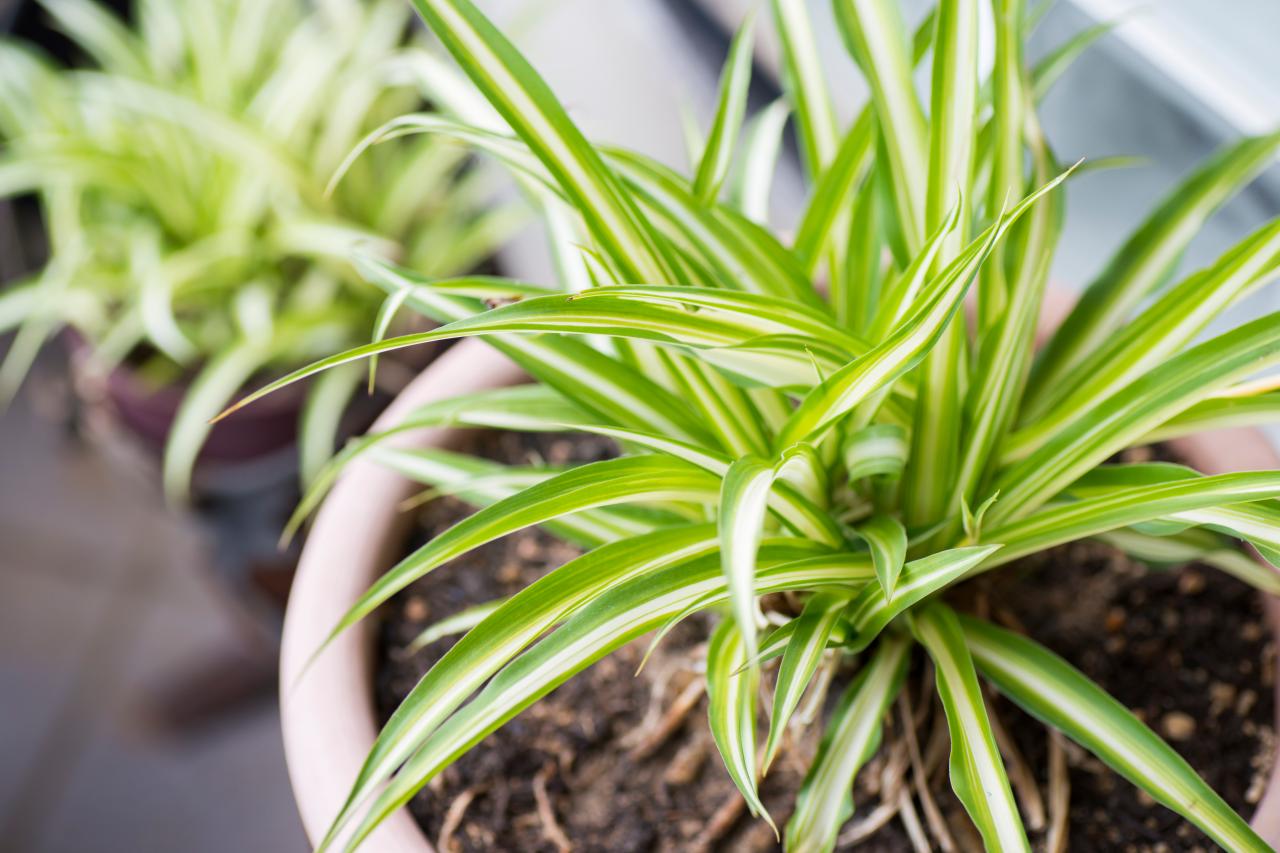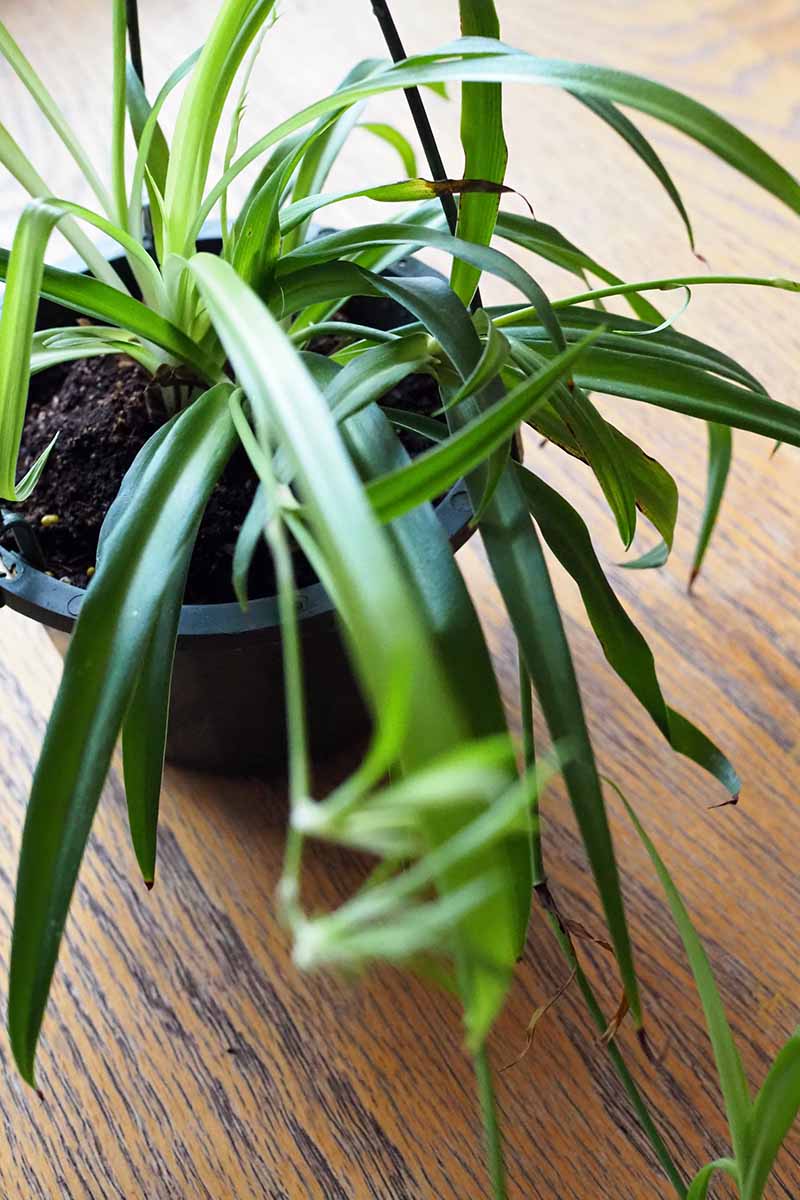Spider Plants: General Information and Characteristics
Spider plants, also known by their scientific name Chlorophytum comosum, are popular and hardy houseplants native to tropical regions of Africa. These plants are well-known for their long, narrow, variegated leaves and their ability to produce plantlets, or “spiders,” on the tips of their stems. Spider plants are popular for their air-purifying abilities, making them a great addition to any indoor space. They are low-maintenance and can thrive in a variety of environments, which has contributed to their popularity among both novice and experienced gardeners.
Understanding the Light Preferences of Spider Plants
Spider plants are known for their adaptability to various light conditions, but they thrive in bright, indirect light. These plants can tolerate low light levels, but direct sunlight can cause sunburn, leading to brown or yellow patches on the leaves. Additionally, prolonged exposure to direct sunlight may fade the vibrant colors of variegated spider plants. To ensure your spider plant receives the right amount of light, consider placing it near an east-facing window, which provides bright morning sunlight without the intense heat of the afternoon sun.
The Role of Sunlight in Spider Plant Growth and Development
Sunlight plays a crucial role in spider plant growth and development. Photosynthesis, the process by which plants convert light energy into chemical energy, relies on sunlight. Proper sunlight exposure helps spider plants produce healthy, strong leaves and stems, ensuring optimal growth. Bright, indirect light is ideal for spider plants, promoting lush foliage and preventing weak or leggy stems. This type of light exposure also helps maintain the vibrant variegation found in many spider plant varieties. By providing the right amount of sunlight, spider plant owners can enjoy thriving, attractive houseplants.
Comparing Spider Plants to Other Houseplants in Terms of Sun Exposure
Spider plants are often compared to other common houseplants in terms of their sun exposure requirements. While many popular houseplants, such as succulents and cacti, need ample sunlight to thrive, spider plants are more adaptable and can tolerate lower light conditions. For instance, snake plants, pothos, and ZZ plants can all survive in low-light environments, but spider plants offer more versatility, making them an excellent choice for various indoor settings. This adaptability, combined with their air-purifying abilities, makes spider plants a popular and practical houseplant option.
How to Adjust Sun Exposure for Spider Plants: Tips and Best Practices
To provide the ideal light conditions for spider plants, consider the following tips and best practices:
- Bright, Indirect Light: Place spider plants near an east-facing window, where they can receive bright, indirect light. This type of light exposure promotes healthy growth and prevents weak or leggy stems.
- Avoid Direct Sunlight: Direct sunlight can cause sunburn or faded leaves. If you notice brown or yellow patches on the leaves, move your spider plant to a location with less intense light.
- Rotate Regularly: To ensure even growth, rotate your spider plant every few weeks. This practice helps prevent the plant from leaning towards the light source and becoming lopsided.
- Monitor Growth: Pay attention to your spider plant’s growth patterns. If it appears leggy or weak, it may need more light. Conversely, if the leaves are yellowing or wilting, it might be receiving too much light.
Common Issues and Solutions: Spider Plants and Sunlight
Spider plants can experience various issues due to inadequate or excessive sunlight. Here are some common problems and solutions:
- Yellowing Leaves: This could be a sign of too much light. Move the spider plant to a shadier location and ensure it receives only bright, indirect light.
- Slow Growth: Slow growth might indicate that the spider plant is not receiving enough light. Consider moving it to a brighter location or supplementing its light with a grow light.
- Sunburn: Direct sunlight can cause sunburn, resulting in brown or yellow patches on the leaves. If you notice this issue, move the spider plant to a location with less intense light.
By addressing these common problems, you can help your spider plant thrive and maintain its air-purifying abilities.
Spider Plants and Artificial Light: A Viable Alternative
If you’re unable to provide adequate natural light for your spider plants, artificial light can be a viable alternative. Here’s what you need to know:
Types of Grow Lights
There are several types of grow lights available, including Fluorescent, LED, and High-Intensity Discharge (HID) lights. For spider plants, Fluorescent and LED lights are often the best choices due to their energy efficiency and lower heat output.
Setting Up an Artificial Lighting System
To set up an artificial lighting system for your spider plants, follow these steps:
- Choose the right grow light: Select a Fluorescent or LED grow light with a color temperature between 5000K and 6500K, which mimics the spectrum of natural daylight.
- Determine the distance: Place the grow light at the appropriate distance from the spider plants to ensure even light distribution without causing heat damage. A general rule is to keep the light about 12 to 18 inches away from the plant canopy.
- Set a timer: Provide 12 to 16 hours of artificial light per day, followed by 8 to 10 hours of darkness. Using a timer can help maintain a consistent light schedule.
By following these guidelines, you can create a successful artificial lighting system for your spider plants, ensuring they receive the light they need to thrive.
Conclusion: Caring for Spider Plants and Their Sun Exposure Needs
Spider plants are versatile houseplants that can adapt to various light conditions, making them a popular choice for many indoor gardeners. While they can survive in low light, bright, indirect light promotes their healthiest growth and vibrant appearance.
When considering the question “do spider plants need sun?”, it’s essential to understand that, although they can tolerate some direct sunlight, they thrive in bright, indirect light. By providing the ideal light conditions, you can help your spider plants grow lush, full foliage and maintain their air-purifying abilities.
Experimenting with different light conditions is key to finding the optimal balance for your spider plants. If you’re unable to provide adequate natural light, artificial grow lights can be a viable alternative. By following the tips and best practices outlined in this article, you can ensure your spider plants receive the light they need to flourish.








